
Gustard DACs and SoundNews go like bread, jam, or peanut butter, depending on your preference. I must admit, that while we like high-end electronics and their almost limitless performance, we strongly dislike their sky-high prices. As such, recommending them was always challenging, especially considering current world economics and politics. We don’t play favorites based on country of origin; Made in China, in the USA, or Europe equals made on planet Earth to me. What always mattered was a phenomenal sound, a strong feature set, and a price that made sense. Let’s be real, I adore my Rockna Wavedream Signature and I’m pretty sure I will be on cloud nine with the soon-to-be-released Rockna Reference Signature, but man, those beasts sting the wallet. I want to recommend gear that delivers amazing value, not stuff only rock stars can afford, and for this reason, we will always be catering to all levels of HiFi around here.
For those who don’t know, we always time our articles and videos. Important stuff that spreads like wildfire is usually discussed around Christmas or at the beginning of the year. We’ve been testing the Gustard X26 III for a while now, and after conducting important comparisons for a little over two weeks, I decided to drop this review before Christmas as this unit might be the most important DAC release of 2024. Let me explain to you why.
Any Gustard unit released and later reviewed around here got our recommendation and that’s not because we have something going on with Gustard or their resellers, we have much higher values than that. They genuinely outperformed many higher-priced units, offering a tremendous bang for the buck. If you check any of our X26 PRO, R26, or X30 reviews, then you’ll observe that you are getting a lot in return with any of these units, not only an impressive spec sheet, great component selection, and some sought-after measurements, but also a sound that commands respect and admiration.
As Gustard slowly started loading their units with wired streamers starting with R26, A26, and then X30, it was only a matter of time before the X26 line got a similar treatment and that time has finally come. After testing their newest creation in two distinct setups, the X26 III proved to be not only a marginal facelift that added much-needed streaming capabilities to its feature list. This fellow is a little bit more than that and let’s write about this in the usual fashion. Perhaps the best thing to ever happen to the X26 The Third is that while it has a much better feature set and functionality, including newer DAC chips and digital boards, its price didn’t go as much as expected. In March of 2021, the X26 PRO was priced at exactly $1500 and if you count the cumulative 20% inflation rise to the present time, then it should be priced at least 20% higher according to BLS and current CPI. At $1599 however, X26 III seems like they are getting less and we are getting more for our money. But enough with the talk, let’s dive in and uncover its secrets.
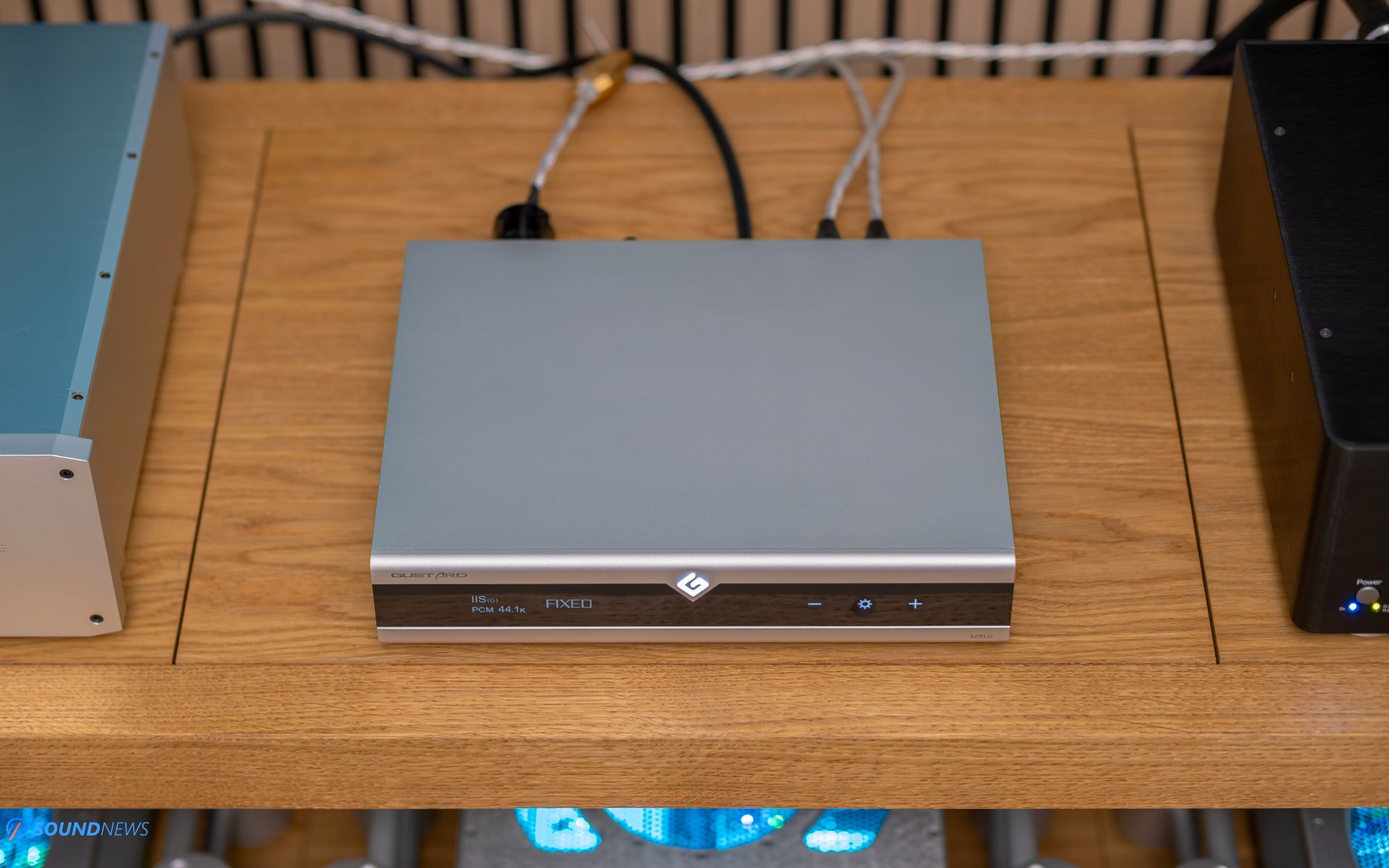
Design & Build Quality
I’ll write it bluntly, if you already checked our X30 review around here, then the X26 III is built to the same standards, having just a smaller and lighter weight body. If you checked our X26 PRO, A26, or R26 reviews, then the X26 III has an identical case size and weight, only a marginal facelift to look more like a miniature version of the X30.
If you are a frequent reader, you already know that I relentlessly hammered Gustard over the years. First with their user manuals stuffed into mini-CDs spinning like it’s 1999, then with their awful-looking pseudo-English website that’s still a mess even as I’m typing this. I never liked their remotes and that seems to be a recurring phenomenon with the X26 III – it’s the same plasticky remote that everybody dislikes. While I like their tank-proof cases, well-made metallic footers, and solid CNC machined cases, I never quite resonated with their misaligned displays and asymmetrical cases up until their A26 dropped like a bomb on my table. Gustard’s A26 was the first unit that hit the jackpot and made sense to me and then the X30 added a higher refinement factor on top. Both units were solid, beautiful, symmetrical, with a centered display and everything was exactly how I envisioned a proper HiFi equipment would look like. They were beautiful on the inside and out. Luckily, Gustard followed the same winning formula and when it comes to aesthetics, it looks more serious and refined this time around.
We have a barely lit Gustard logo in the middle, a tempered glass front panel with touch controls, and obviously, a massive monochrome display that presents a user-friendly UI. What’s not to like?
The zig-zag pattern and the side openings of the X30 are no longer here, since the LPF/output stage and the I/V conversion stage are two times smaller, thus the temperature won’t go up as high or as fast. The labyrinth-like heat sink pattern already does a great job at dissipating heat and I wouldn’t worry too much about heat generation with this unit, as long as there is decent spacing and ventilation in the listening room. Please don’t ask me how, but the updated X26 is no longer as hot as the former X26 PRO was back in the day. You won’t fry eggs on its surface and this is a good change of pace, as the electronics operate nicer at cooler temperatures (including our brains) and will have a longer life span. The metalwork seems flawless and the case is thicker compared to what Topping and SMSL flaunt and, in this regard, I’m sure it will keep at bay all wireless interference.
It needs to be said that all digital inputs on the back have rubber protection doors, a minor detail that might have a major impact on the user experience. Don’t forget that every exposed connector works as an antenna, so covering them was a genius move that might positively impact the sound performance. The only thing I dislike about it is the same low-quality remote control. I understand the reasoning for bundling it with all of their DACs and all-in-one combos up to 1-kilo buck, but a premium product like X30 or even X26 III should come with a nicer, ideally CNC-machined aluminum remote. I would pay extra to have such a remote and I’m not even kidding. I know, it’s nitpicking on my part, but using it mainly in a stereo rig, I do wish it came bundled with a nicer remote.
Rocking a redesigned case that no longer triggers my slight OCD, it looks more futuristic and elegant at the same time, dropping all of the sharp edges of its predecessor, for smoother surfaces and refined looks.
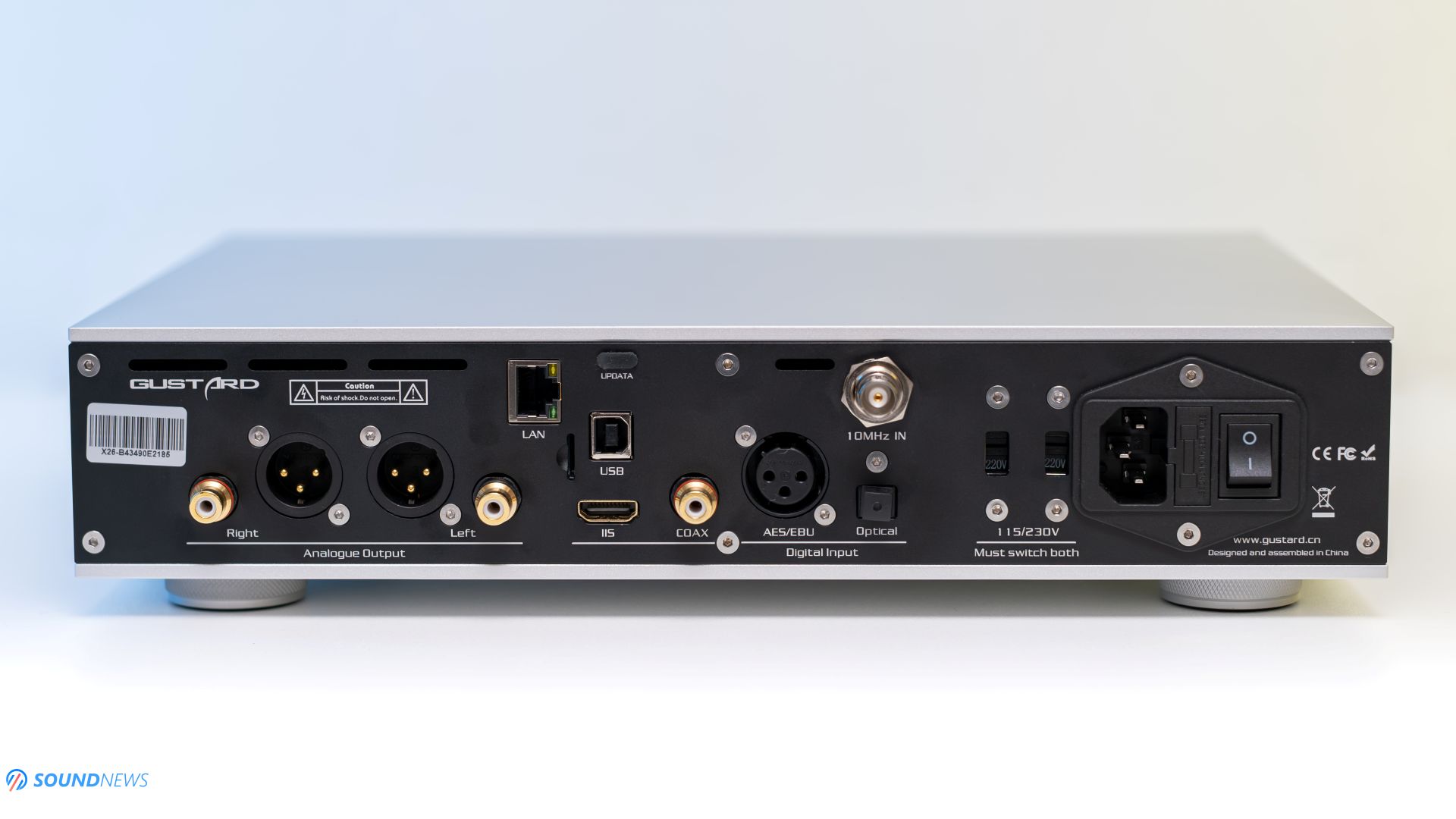
Controls & Connectivity
The whole unit has just a single On/Off button, taking the shape of the Gustard logo. Once powered, the OLED screen will light up and several touch buttons will pop out of nowhere. You can see the volume controls on the right, including a settings icon that will engage the user interface once touched. It can’t get much simpler than this and the cherry on top is a user-friendly UI.
Taking a look at its back, you’ll be surprised by how many digital inputs are being offered. Before powering on the unit, please make sure that both switches are showing the correct AC voltage (115V or 230V), these two are connected directly to the linear transformers found inside its case, so be extra careful with that. Checking out the digital inputs, X26 III has them all, including an I2S input and an RJ45 (Ethernet) port that will unlock the internal Roon endpoint, in case you already have a Roon Server installed around the house. The Ethernet port supports several protocols such as Apple’s AirPlay, UPNP, and NAA. You can spot a 10 MHz clock input as well, but honestly, X26 III already uses one of the best atomic clocks I have encountered on such units and I wouldn’t bother using an external one.
The usual RCA and XLR outputs are configurable as fixed or variable, depending on the settings, meaning that you can use it as a DAC and passive preamp if you wish. There’s one thing that stands out when checking its spec sheet and that’s the output impedance of both the RCA and XLR outputs, sitting at just 100 Ohms. A lower impedance like that ensures a better handshake with integrated amps and power amps of all sorts and even if we don’t have a dedicated line-amplifier circuit (active preamp), it should work decently when paired with power amplifiers.
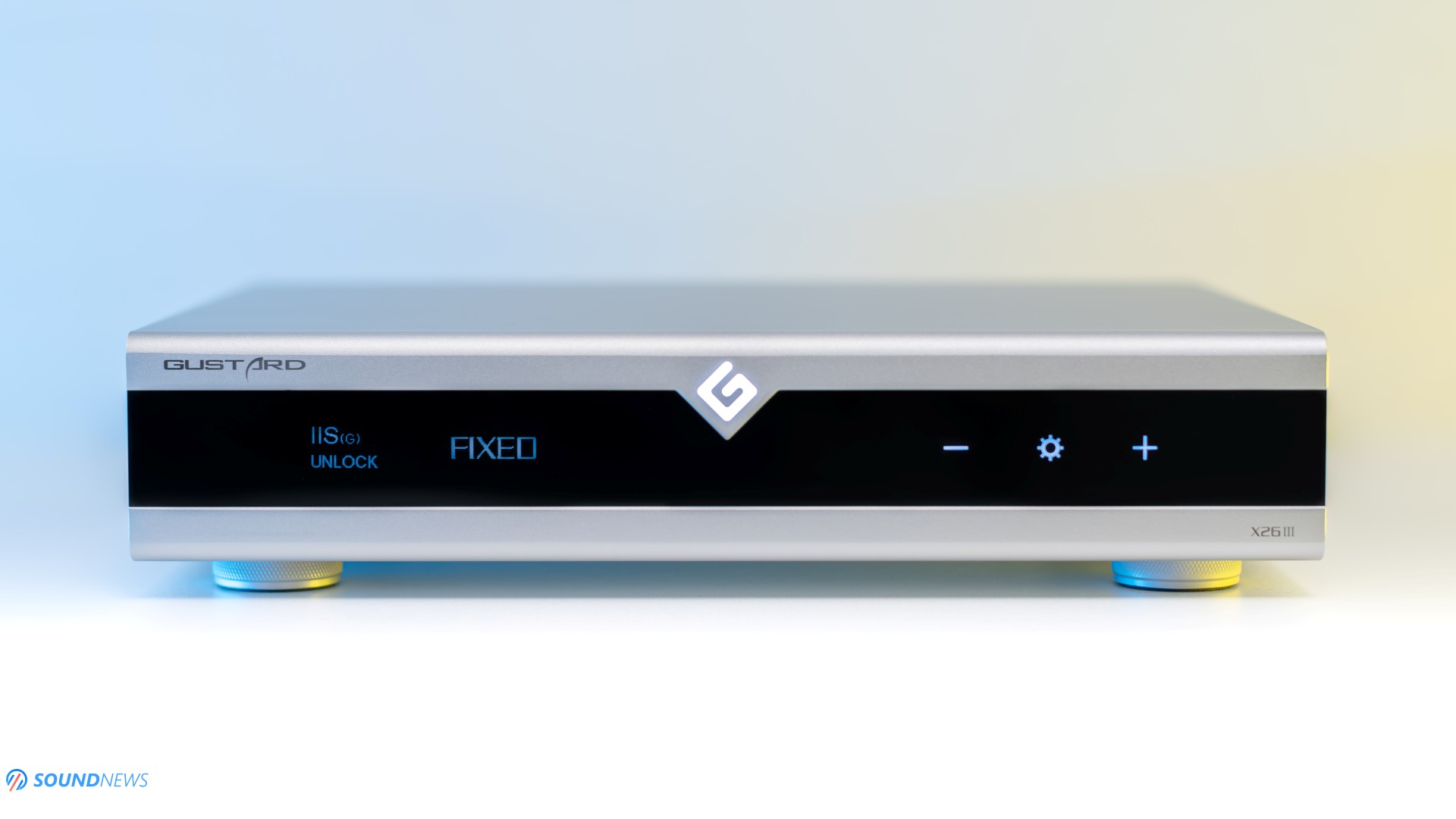
Menu Settings
As previously mentioned, X26 III isn’t loaded with bloatware or hidden menus. It’s incredibly simple and straightforward. Its UI is accessible via the remote control or by touching the settings icon on its screen. Once engaged, you’ll get the following options:
- PCM Filter – You can choose between three digital filters. It’s important to mention that these weren’t developed by ESS Technologies (as most of you might think). Gustard engineers developed them from the ground up and they (finally) make a difference. You can choose between Vivid, Gentle, or Composite. The first one sounds the most accurate and fast, Gentle slows down the transients a little, while removing some treble energy and the last one feels like a combination of the two. Given the rest of my chain and knowing my inner self, I left it at Vivid.
- DSD Filter – Four options are provided. You can choose between a narrower bandwidth for a smoother top-end, or a wider bandwidth (50 kHz, 60 kHz, or 70 kHz) for an extended treble delivery. Choose the one that suits you best.
- NOS Mode – It’s either enabled or disabled. Gustard isn’t providing any information about this feature, but thanks to a programmable FPGA chip, Gustard was able to disable the oversampling filter which is enabled by default on all ESS Sabre devices. NOS mode will offer a smoother sound, bonding the notes more naturally, and once disabled, it will behave like a regular oversampling DAC.
- REF Clock – Two positions are provided: Internal (Default) or External 10 MHz. You can choose the internal clocking system (which is already impressive, using a highly accurate atomic clock) or you can go with an external 10 MHz clock generator. Leave it at Internal.
- IIS Mode – Four modes are provided. Considering that the I2S (IIS) input wasn’t standardized yet, these modes will ensure wider compatibility with your streamers and digital transports. By default (Mode1), X30 uses the standard I2S pin configuration used by PS Audio, Rockna, and others.
- Phase – Two positions are provided: Non-Inverted (default) or Inverted. Self-explanatory, leave it at default.
- Display – It’s either Auto or Auto-Off. Since we are dealing with an OLED screen that could potentially burn in after a year or two, I would use it in Auto mode which will turn off the screen after a few seconds of inactivity.
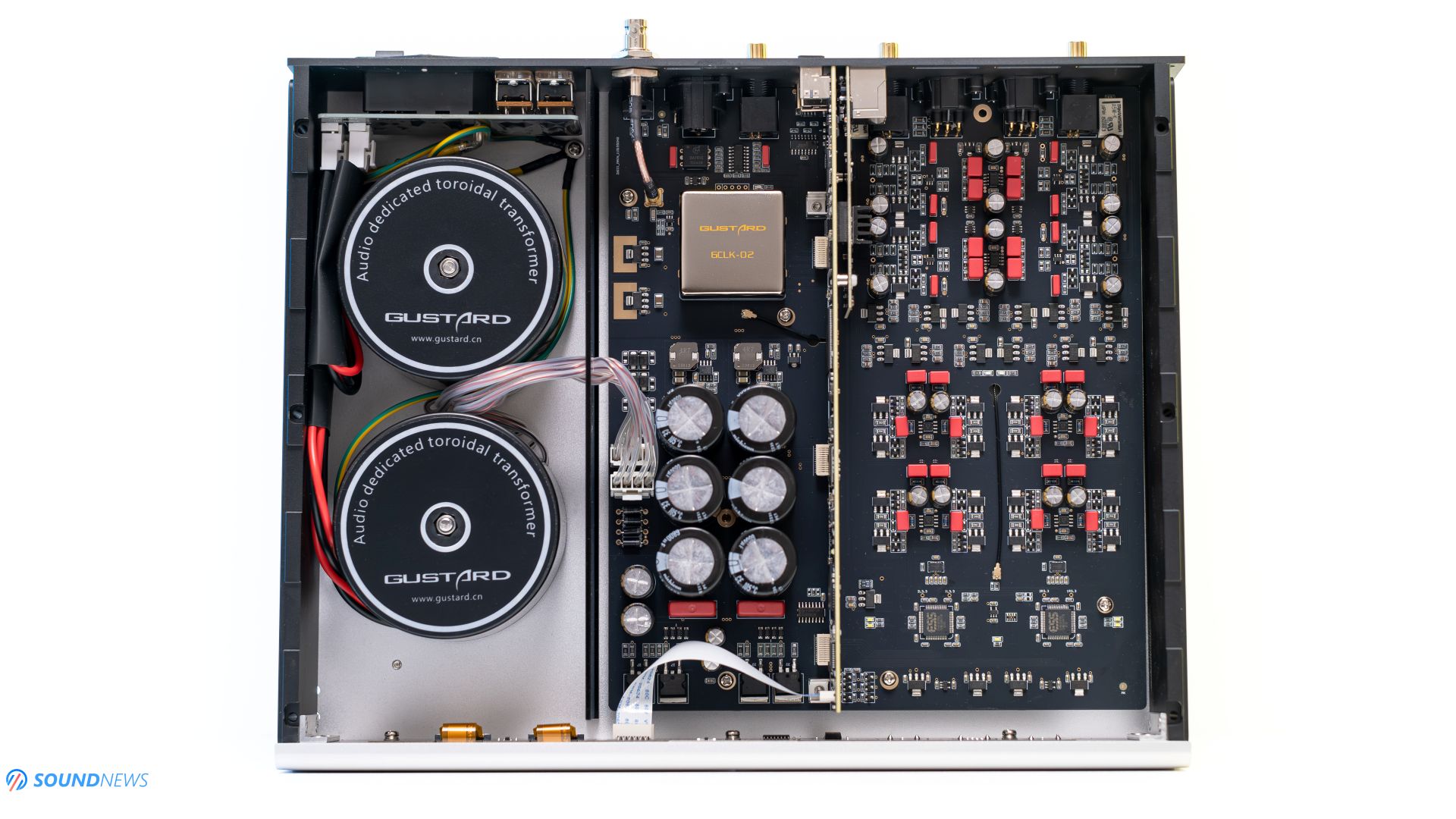
Under its Hood
Although X26 III has a ton of similarities with its older X26 PRO sibling, it’s undeniably a better unit altogether, as both the digital and analog sections were improved here and there, bringing the unit into modern times.
One of the crucial parts of the X26 III is that we no longer have the old ESS 9038 PRO chips, but the newest, ESS 9039 PRO chips that can be found in the X30 as well. The only difference is that we don’t have 4 chips working in mono mode, but two chips working in stereo mode. And just like that, the stereo separation (channel crosstalk) is slightly less impressive on the X26 III versus the X30 and I’m sure that will have a minor impact on its sound staging capabilities.
On the plus side, 4 chips working in mono mode, will need to double the components used at the I/V conversion, LPF, and output stage, thus X30 is almost doubling in price. X30 was built in an overkill way and as such, it was the highest performing ESS-Sabre-based converter we tried to that point, and it seems that the X26 III was built like a miniature version of the X30, using similar components, but in a dual chip configuration versus an overkill quad-mono design.
Another major difference on the logic board is the inclusion of a massive-looking GLCK-02 thingy that combines an atomic clocking system (clock generator) with a clock synthesizer. Since two atomic clocks are located millimeters away from the synthesizer all wrapped under a single enclosure, the signal path is the shortest and since everything is hidden under a metallic cage, the mechanical and electromagnetic noise of the dual power supply will no longer badly affect their stability and accuracy.
Last but not least, a daughter board connected horizontally to the logic board, includes the same board as the R26, A26, and X30 have, which enables wired music streaming via an Ethernet port. The unit is Roon enabled and can work as a bridge/endpoint, AirPlay is also a thing, including UPnP/DLNA renderer and I hear it even rocks Spotify Connect. I was unable to test the last feature as I dislike lossy (mp3) streaming platforms such as Spotify. Once the unit is online, you can enable or disable certain protocols by running //x26.local on a PC/MAC that’s connected to the same network.
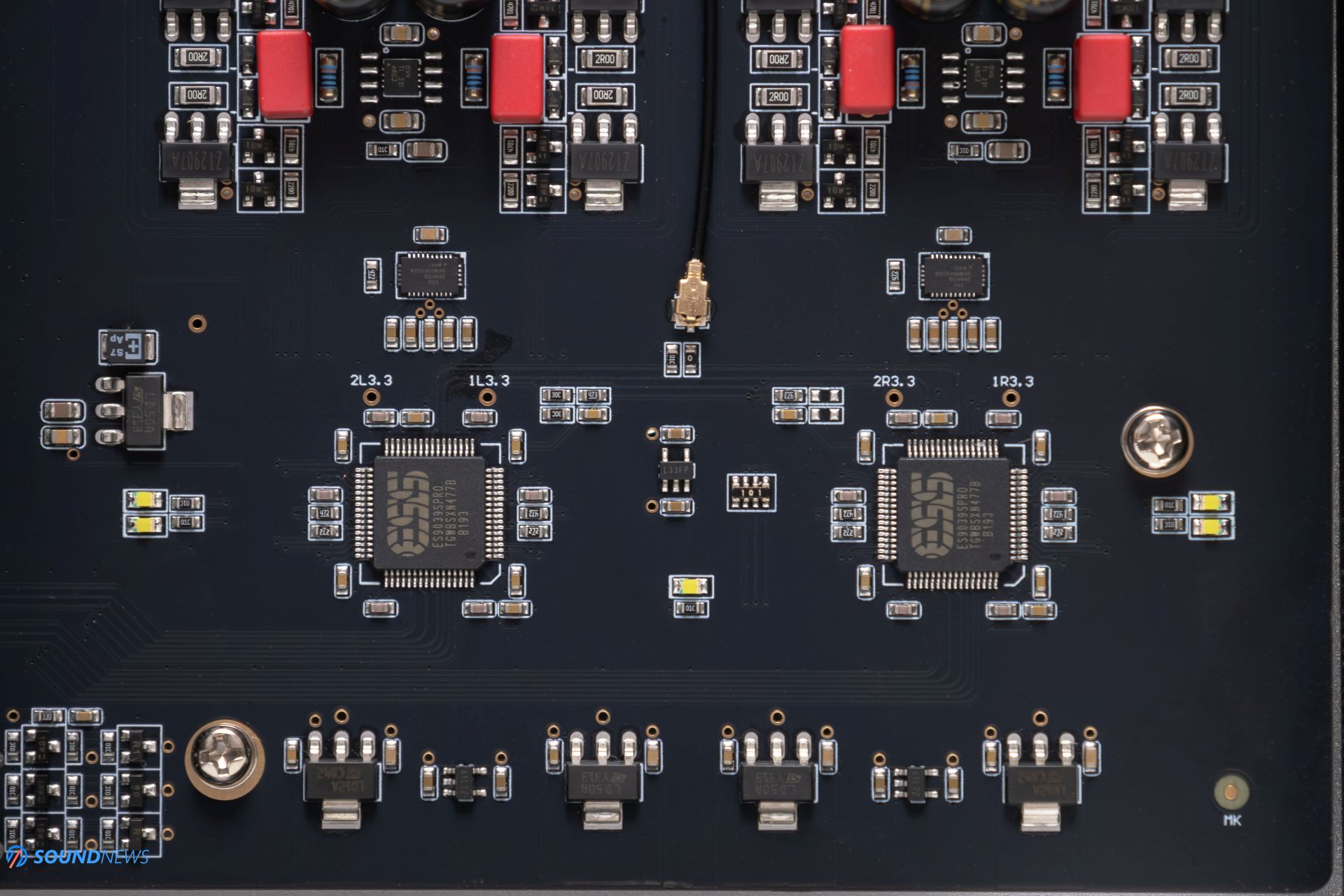
Newer and higher-performing DAC chips, a better clocking system, and the inclusion of wired streaming, already make the X26 III a more desirable unit versus its predecessor, but how about the analog section?
Luckily, we have a very similar hybrid I/V conversion circuit combining discrete components with an operational amplifier per module. I can spot four modules, so clearly the unit works in a fully balanced configuration. The LPF/Output stage was slightly redesigned for the newest DAC chips, by using discrete components (such as resistors, diodes, and transistors), biased into Class A operation. This part is the soul of the DAC, the tonality of a converter is given by the output stage and luckily, we see tons of discrete components powered independently by an audio-grade linear transformer.
Gustard already proved that even ESS Sabre silicon can sound tonally rich with a careful selection of components and I presume that their newest X26 III will follow a similar path.
Gustard dropped the relay-based (R2R) volume control present on X30, since there wasn’t additional space, using a digital volume attenuator instead. For this particular reason, I recommend using the X26 III at maximum volume (fixed voltage output) as a DAC-only unit, as opposed to using it as a DAC + Preamp for the best results. We don’t have an active preamp stage on board, so again, an external preamp would do wonders for stereo heads, or you can go with an integrated amplifier and completely bypass X26’s volume control
In the usual fashion, we have two 50-watt ultra-low noise linear transformers, one for the digital section and one for the analog section, which is (again) a great design decision. The transformers are quite heavy and you can feel the unit pulling you down on the left side when holding it with your bare hands.
All in all, I must say that Gustard took the best parts of the X26 PRO and refined the worst, arriving at a much more polished X26 III. It’s worth noting that except for a better clocking system, volume control, and DAC chip configuration (Dual Stereo vs Quad Mono), the X26 III and X30 share A LOT of similarities. If you never had the funds for the X30 but always dreamed about it, then the X26 III looks like a miniature version of their best DAC, a solid proposition inside and out.
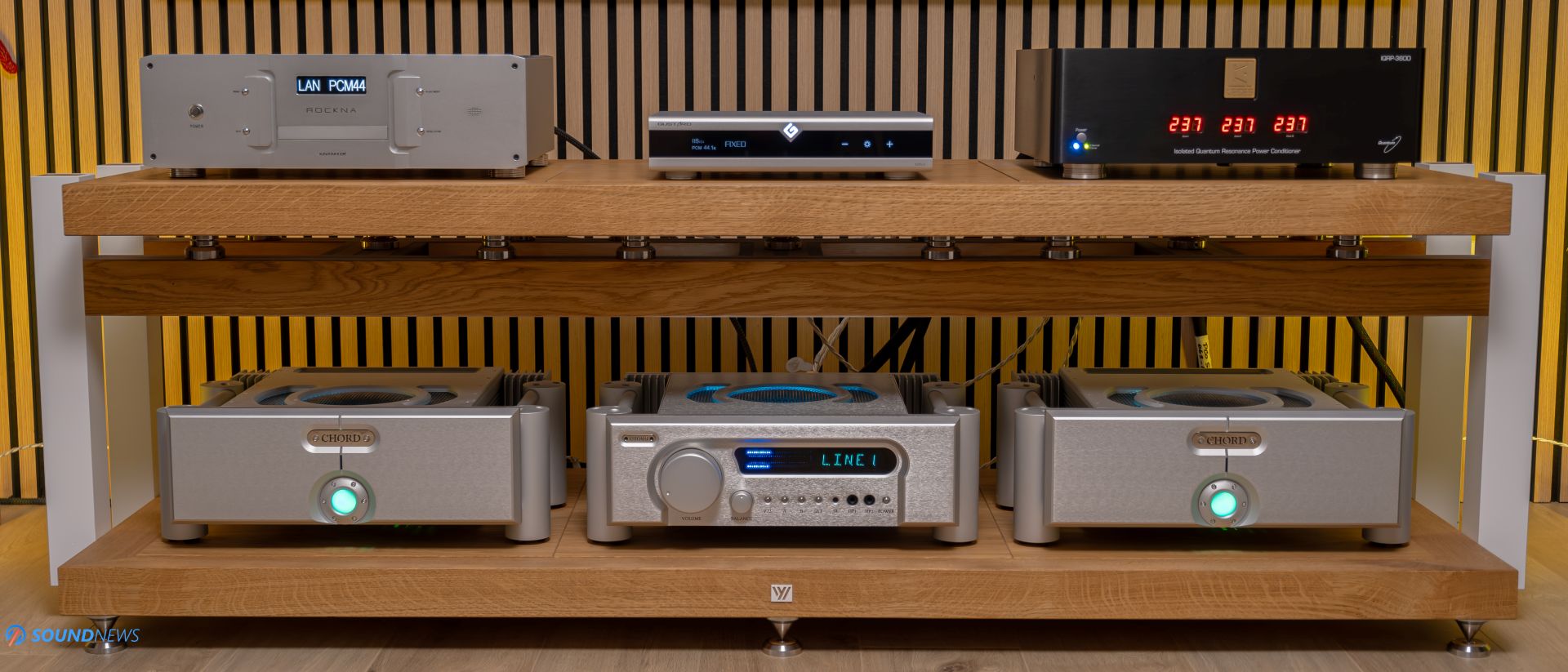
Test Equipment
Before you ask, X26 III was used in a stereo rig most of the time working as a standalone DAC, but I also used it as a Roon endpoint (wired streamer) and DAC in a well-thought headphone system with a bunch of dynamic and planar headphones.
In my office it powered a pretty interesting Erzetich Bacillus II Plus or the Cayin Soul HA170 headphone amplifier, driving either the T+A Solitaire P or the HiFiMan Susvara Unveiled.
In the living room, the X26 III was fed via I2S from the Rockna Wavedream NET 4 TB Roon server, followed by a Chord Electronics Ultima 2 Preamp, Ultima 3 Monoblock power amplifiers, and Raidho TD 2.2 loudspeakers, playing tunes for almost two weeks before dropping my final evaluation. All cabling used was of Crystal Cable Monet breed (power, interconnect, Ethernet, and speaker cables). Everything was also powered by a KECES IQRP-3600 balanced power conditioner. Alright everyone, my body and soul are ready for some well-deserved music, so let’s hit some eardrums!
A Friendly Advice
Before going ALL-IN in the most overkill way, I need to tell you a secret. Writing such articles, doing dedicated photo shoots, and then crafting an equally impressive video review, shot in the highest resolution, doing color correction, and then adding tons of B-Roll material, all by myself…drains a lot of my energy and time. On average, I need six full days of work to write, film, and edit one single article and video, without counting the listening tests. All this knowledge, test results, and content go out FOR FREE. You won’t find our PayPal address around here, buy me a coffee link, or a Patreon account, everything goes out freely and I will continue in the same fashion as much as I can. The only thing I ask in return is a little bit of trust for the knowledge I’m leaving behind and of course, if that’s not too much to ask – subscribing to our YouTube channel that will motivate me to do things I like most in this complicated life. It will cost you a fraction of a second but the result will motivate me more than you can imagine. With that out of the way, let’s cheer up a little and check our test subject.
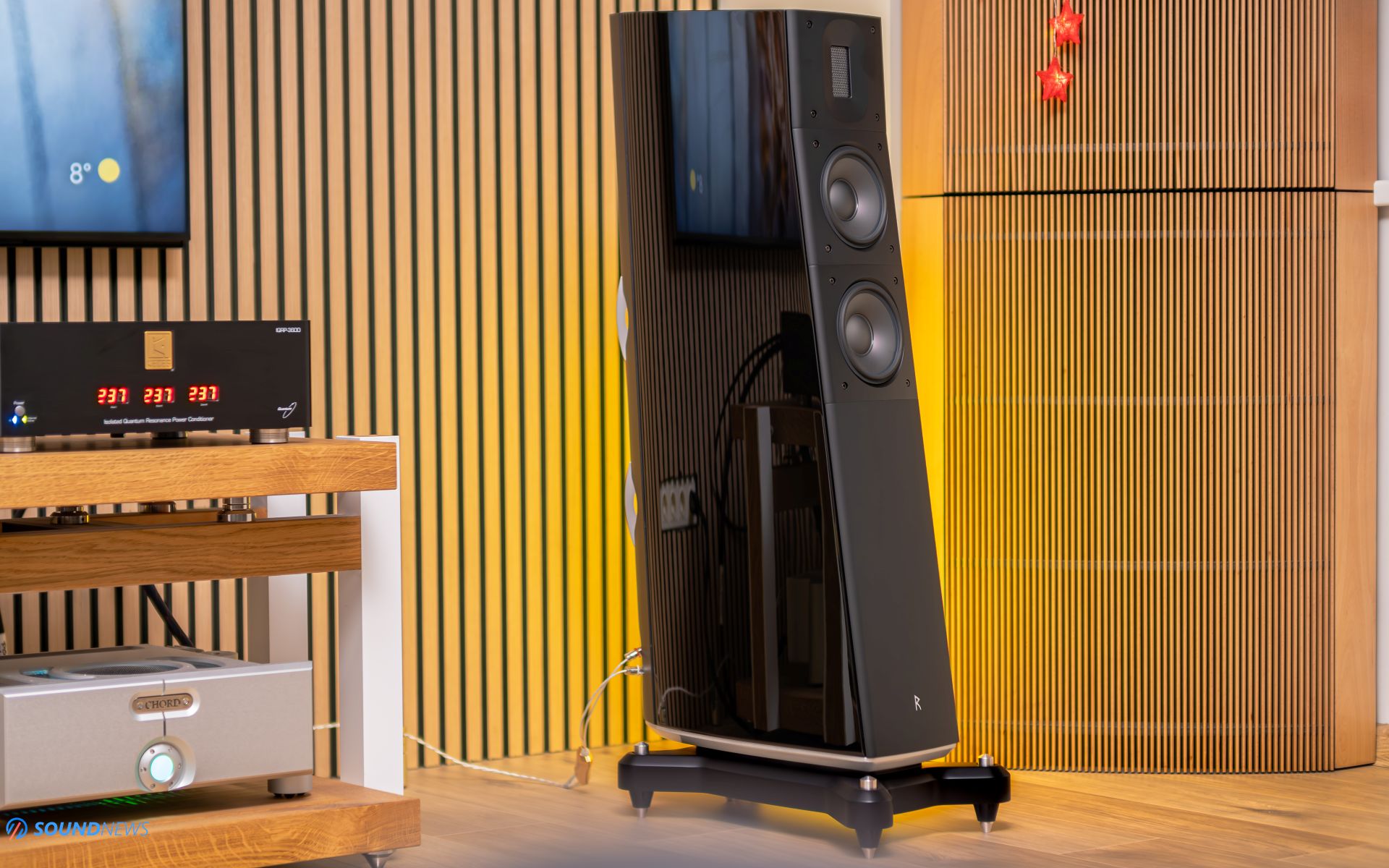
Sound Performance
I. Preliminary Sound impressions
Fluturi pe Asfalt is without a doubt one of the most original Romanian post-rock/post-metal bands of today. You need to have a higher IQ than usual to understand these guys and that’s probably the best part. Their first album felt like a strong wake-up call for humanity, their messages were always strong but their bass riffs were even stronger. Mixing politics, world hunger, and thousands of inner thoughts with a strong black-and-white vibe, these guys had a tremendous start in the local underground scene. Mixing a dose of sadness with two metaphors per phrase somehow resonated with me today. Maybe it’s the mid-life crisis or the absence of the sun for a couple of days, I’m not really sure. Although unknown to most people, being small and underground, raw and unpolished (very much like me), these guys push their souls out every time they perform. They have something that’s both usual and unusual at the same time. Sure, it’s the same post-rock theme, but thanks to great recording, mixing, and mastering, I can now enjoy underground music in the comfort of my home without lowering the volume.
Tot Felul (found on Qobuz and Tidal) is a track that resonates with me. Right off the bat, it was clear that the X26 III wasn’t only technical and utterly resolving, very much like its predecessor, but this time around I felt the oomph, the weight, and the bold tonality of the X30. The sound wasn’t just passing through, having a perfect pace, rhythm, and timing, this time around I could shed a tear while listening to my favorite tunes. This track is definitely mirroring my personality and I’m glad that X26 III can render the grotesque beauty this imperfect track shows from start to finish. A tear can indeed sing as these guys are trying to convey and my stereo proved that even chip-based converters that won’t cost you a kidney can be both musically engaging and resolving at the same time.
Four years already passed since the X26 PRO review went up, a true sign that time doesn’t pass linearly for every individual on this rock, we call Earth. I can certainly mention that the X26 the third leans a lot more toward the X30’s tonality and flow. I wasn’t surprised getting a stronger bass delivery versus a Topping D90 III Discrete that I reviewed two weeks ago, but getting a sweeter vocal performance was something I didn’t think was possible.
A young girl plays local folk songs that awaken my DNA from its slumber. This year Irina Rimes released her sixth album called Origini (found of Qobuz and Tidal) singing about her people’s origins. About love, celestial bodies, wine (naturally), and about a very special word that doesn’t exist in any other language: dor. I can hardly explain what it means to you, since it combines several meanings. Longing is probably the closest word to it, but still, it’s not even close. This album may not be a HiFi recording in the true meaning of the word, but who said we need to listen only to albums released before 1989 to be a real HiFi reviewer? Oh, wait! Somebody actually said that.
I’m sorry, I’m not one of those folks. I like to explore everything this life has to offer, in all its forms. Gastronomy, traveling, art and music. The weirder the vibes – the higher the chance I would like that album. If it’s something uncommonly cool, I will probably play it on repeat for a couple of days. And that’s the deal with this album. It’s so common for people of my birthplace, yet it feels so alien for the rest. Going back to X26 III, the striking part was not getting a technical performance, because that was to be expected, I knew exactly what I exposed myself to. The striking part was the unconventional musicality – the word that the HiFi press hates so much, but it’s real and it’s happening right now on the X26 III.
Gustard’s X30 was (for me) one of the most natural-sounding ESS chip-based DACs I tried, using a similar formula for its smaller brother. But it’s not similar! It’s very much identical and that includes the fun factor. And this, my friends, is a pretty big deal.
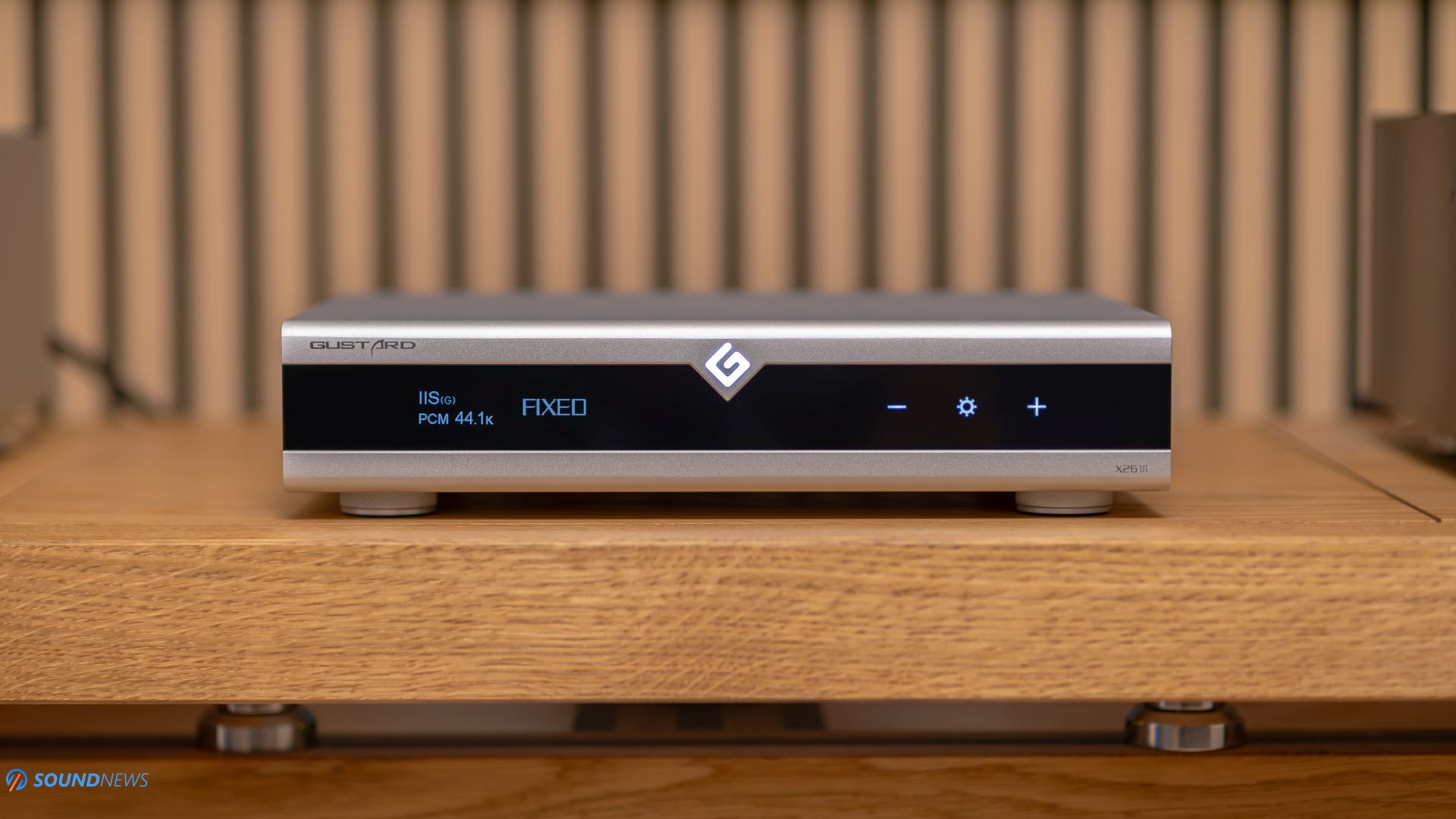
II. Dynamics & Transient Response
You’ll probably laugh, but my speakers have a psychology degree. They made me walk when my world stopped, and they are the ones knowing me from the inside out. When I want to skydive or be on top of the mountain, the only thing I need to do is press the big play button and take flight.
Dynamics are quintessential for every DAC regardless of the price, they need to roam wild and make you feel things but that’s rarely the case with affordable units. Take the Topping D90 III Discrete as an example. It’s a lovely DAC that has some extraordinary skills. The resolution is up there with the test subject, the note-bonding skills are impressive, there’s a notable stereo separation and it always presses on the gas pedal to the floor with electronic music. However, when the bass needs to blast your eardrums and massage your body, it’s not as powerful anymore. Throwing fast punches with little to no substance can sometimes ruin an excellent mood and listening experience.
Word for word, when That Fire by KR3TURE / Olivia De La Cruz (found on Qobuz and Tidal) started dropping some serious punches below 40 Hz, the Topping was no longer fighting in the heavyweight division, dropping to featherweight and pushing lighter bass notes that carried lesser energy along the way. By comparison, the X26 III was still fighting like Iron Mike in its prime, dropping serious bass lines that weren’t only rattling my skull, but the foundation of this building. All of the Gustards, but especially their upper-class devices were always providing a strong foundation in the sub-bass. A DAC’s output stage always leaves the last word in dynamics and since a third of its case is populated with analog devices used at the LPF/Output stage, it’s no secret to anyone, that this aluminum-clad fellow can throw some iron punches, float like a butterfly and sting like a bee. Mentioning two legendary pugilists when describing X26’s performance on a single track? I must be tripping, but it’s genuinely impressive and even an untrained ear can feel the electrifying energy emanating from speakers or headphones when X26 III does the heavy lifting.
The final kick in the chest is pretty substantial, to say the least, but how about its need for speed? Can it go in and out in split seconds? Can it play several notes per second, control everything with an iron grip, and then add a bit of space in between them? It wouldn’t be an X26 PRO successor if it wouldn’t be a lightning-fast-sounding DAC. Even if you’re not listening to modern electronica or whatnot, having fast transients is essential when decluttering one-century-old recordings. The music gets right and tonally rich when the timing’s right and since it rocks custom atomic clocks and synthesizers, the X26 III won’t slow down for anything! Unless the music presses the brakes and calms the spirits.
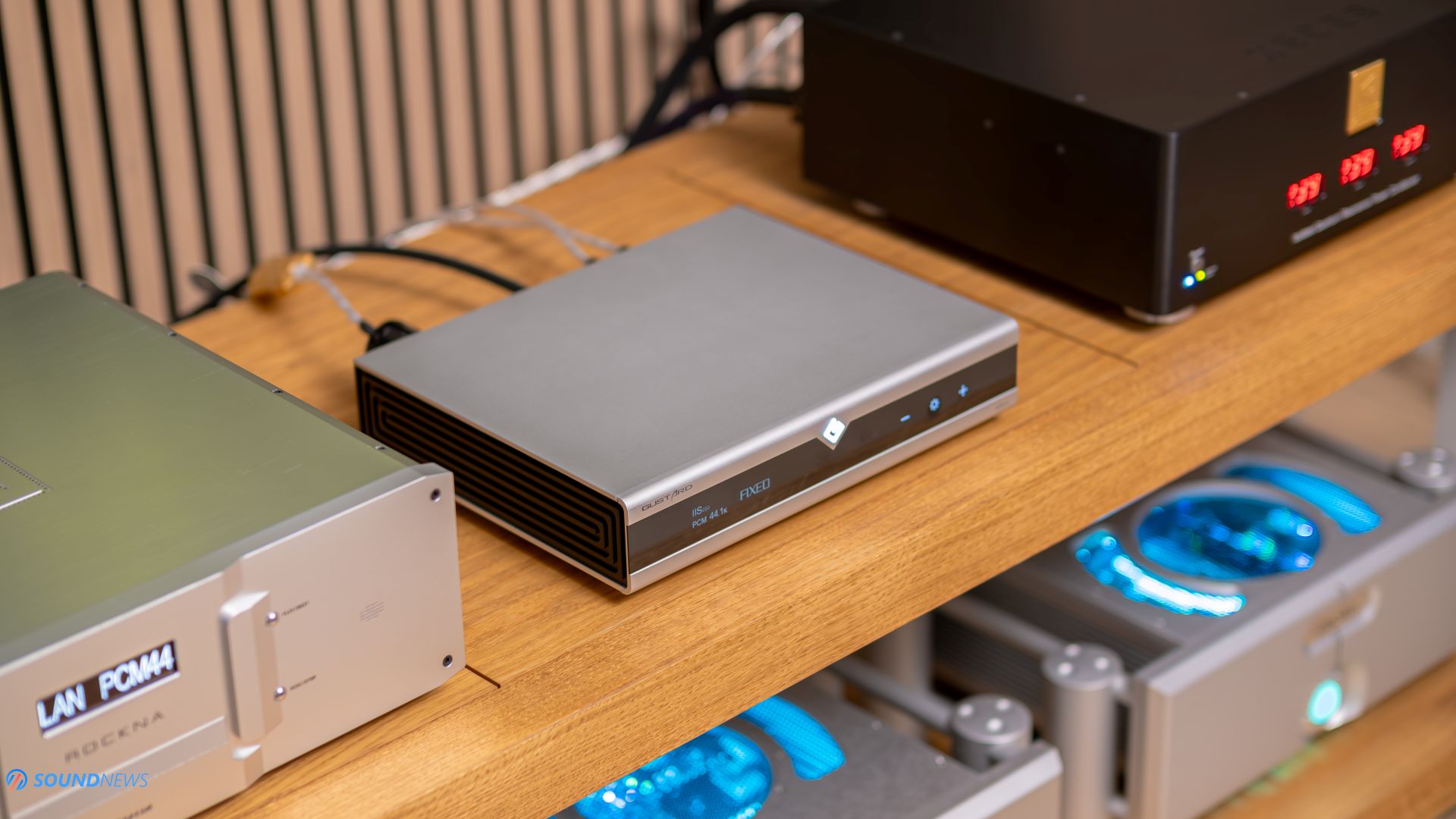
III. Resolution / Detail Retrieval
The only requirement all DACs costing more than a grand should have: putting on display a healthy dose of micro-detail information that should remind you that music isn’t only about sending and receiving emotions, but also about hearing every little thing, like putting your tunes under a microscope. After soldering my first DAC around ~2005 and then going on a quest to find the most resolving DACs out there, I had several surprises along the way. As time passed by, commercial DAC chips started to reign supreme, and R2R ladder DACs were put to the side, thanks to their high price-to-performance ratio. ~$100-ish DACs didn’t even exist for a long time, but right now, there’s a unit for every pocket. Still, the highest-resolving ones were always costly and sadly, that isn’t going to change anytime soon.
The moment I started toying with Gustard DACs was a moment of revelation. I still remember their affordable units such as X16 and X18. These were somehow defying any logic. Sure thing, these weren’t the most natural or chest-pounding units I tried up to that point, but man, I found them so resolving and clean sounding, that even the Matrix Element X at six times their price sitting in their vicinity felt a little jealous. When X26 PRO landed on my test bench, I crowned it the most resolving sounding DAC below 2 kilo-bucks and it isn’t a surprise that the throne now belongs to the X26 III.
But how about the A26 and R26 you ask? Those are extraordinary sounding units, R26 in particular was something I will remember for a long time. The naturalness oozing from that thing, creating a tunnel-like vision thanks to its outstanding holography…is something I won’t forget so soon, and yeah, it was still highly revealing for an R2R ladder breed, A26 was even more so, adding an extra dose of control down low, but the X26 III takes the crown in terms of sheer resolution on both micro and macro scale.
Any track jumping on my playlist proved that there is a bit more nuance, a bit more music ready to be explored behind every track. It can be even a 50-year-old grainy blues or a super loud and overly distorted rock gig and yet, you’ll hear every note with an added sense of clarity.
I’m in the process of replacing all of the tubes in the Cayin Soul 170HA (except for the tetrode power tubes) so I could deliver an in-depth review only we could make, and right there, I realized how important the resolution and overall cleanness can be. It can ruin your listening experience or it can uplift your spirits when everything comes at you so clearly and easily.
Mayonnaise (2011 Remaster) by Smashing Pumpkins lands on the playlist (available on Qobuz and Tidal) and right there from the first 10 seconds, it was clear to me that both the electric and the bass guitar have more shimmer and extra airwaves propelled forward into my eardrums and I can hear a little bit more versus the A26, R26, hell even Topping’s newest and greatest D90 III Discrete and DX9 can’t push forward as much information. The eye-opening act was getting all of this distortion and buzz…peacefully, it felt great and I wanted to further explore this album. Although Corgan should be checked for sanity, his unmistakable voice had so much gutturalness and rawness to it, and the guitar tone? So incredible. The guitars are the star of the show; good doesn’t even begin to describe them. Otherworldly is the best way to describe them. Even separate from Siamese Dream, a record full of amazing guitar tones, the guitars on this track are a cut above the rest. And I fail, but when I can, I will try to understand, that when I can, I will – Billy Corgan.
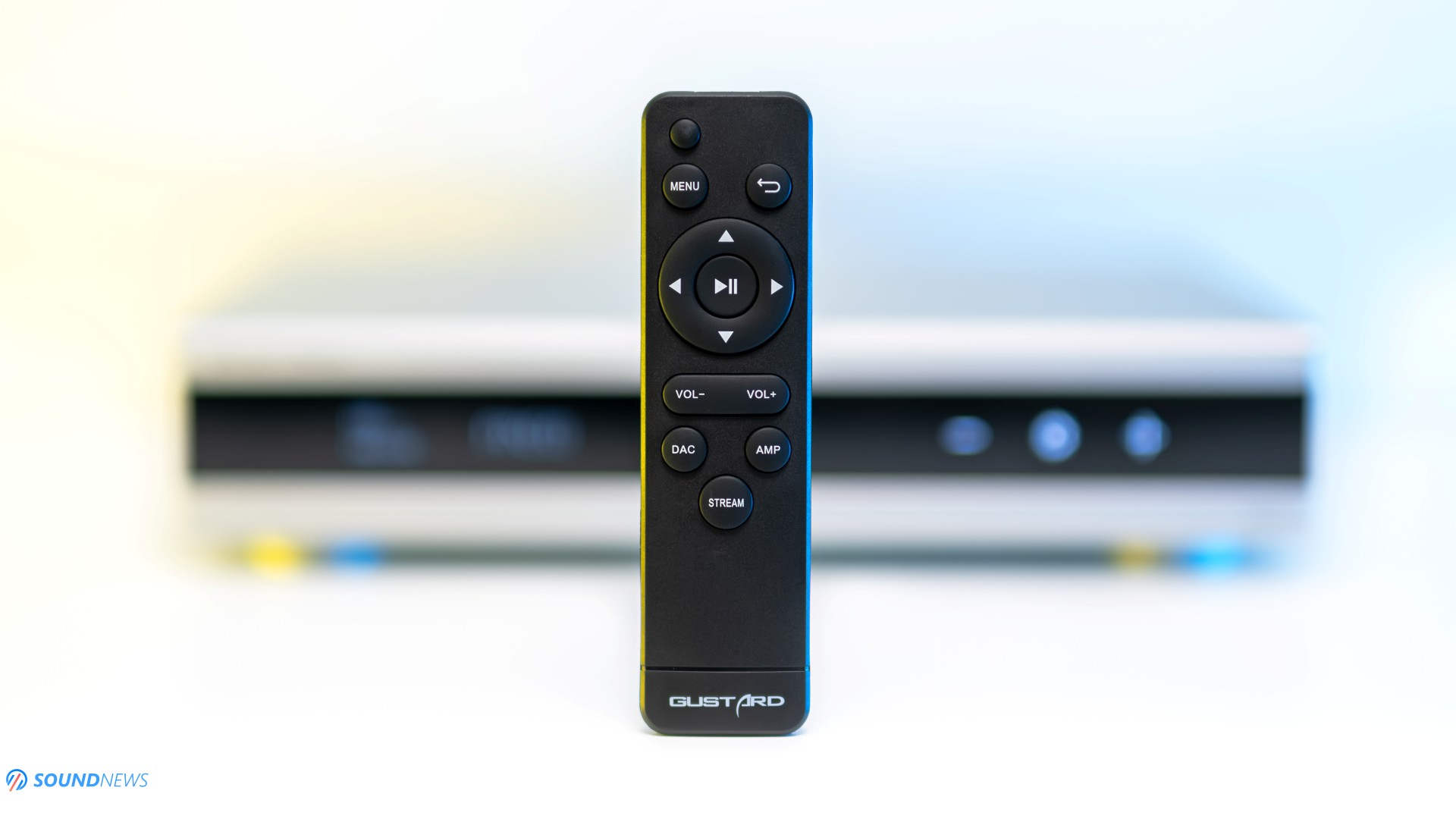
IV. Soundstage & Imaging
There’s an old unwritten rule still going strong under close audiophile circles. If you need depth, scale, and tons of air in between the notes, then nothing does it better than an overkill R2R ladder DAC. That’s right! It still holds true and that probably isn’t going to change anytime soon. I know exactly why I paid top dollar for my Rockna Wavedream Signature; I still remember why the Musician Taurus and Denafrips Terminator Plus impressed me so much. It wasn’t their technical performance, it wasn’t their resolving skills, nor their pace, rhythm, and timing, it was precisely their bold tone and timbre combined with this bigger-than-life scale of the music. Try listening to King by Florence + the Machine (found on Qobuz and Tidal) and patiently wait for the special moment to arrive, the 2-minute and 43-second moment, when the sound literally and figuratively explodes! I love this hobby for these kinds of experiences that move you at the cellular level. The power of music is sometimes so strong that words become meaningless.
These R2R DAC creations are still reigning with an iron fist. They effortlessly pinpoint the location of the notes in a 3D field, they easily show how deep this track can be, how big is the distance between the soloist and the rest of the band, and how big was the recording studio or the live event. They have this incredible skill to make the sound bigger or smaller and all of this comes naturally, without paying a heavy price. The delta-sigma oversampling DACs still have some tricks under their sleeve and the technical performance is their ace of spades. However, with some clever engineering, even such creations can portray a 3D soundscape that breathes and shows the sound’s depth. I have observed that in such rare cases, the analog output stage usually looks beefy, and it’s often biased into Class-A or AB operation, crafted mostly from discrete components. The X30 by Gustard was such an eye-opening DAC in terms of soundstage that several R2R creations couldn’t keep up and show a similar grandeur.
Sure thing, we no longer have a quad mono design (4 pieces of ES9039 PRO) and the X26 III isn’t exactly as expansive and as limitless as far as the soundstage goes, but let’s not forget its custom nature that was downsized from the X30. We have the same I/V conversion and LPF stage, only two times smaller since this is a dual ES9039 PRO design, the crosstalk is a bit higher and the channel separation is a bit smaller and maybe it doesn’t reach the same heights, and depths, but it’s unquestionable a very 3D sounding unit, especially when comparing it with current production DACs in the same price category. The R26 still takes the crown at $1650 and it still shows more depth to the music, widening the picture a bit more versus the X26 III, and yet, the newest Gustard member isn’t lagging much behind. If R26 would be a 10 out of 10 in this regard, then X26 III would be a 9 and the Topping D90 III Discrete would get a solid 8 out of 10.
A Million Miles Away (Remastered in 2017) by Rory Gallagher (available on Qobuz and Tidal) can sometimes be unremarkable due to the inability of the D/A converter to untangle the mess and show it off beautifully. But this time around, even with a pair of HiFiMan Susvara Unveiled resting on my head, I experienced this virtuoso playing somewhere behind my right ear. The sound emanated from behind my head and it was propelled forward, placing a beautiful imagery exactly in the middle. The extreme stereo effect was easily cured by the Cayin Soul 170HA and shockingly, even by the unconventional Erzetich Bacillus II+ so nicely, that in a two-hour listening spree, I didn’t get tired. Rory is such a character, always bold, and charismatic, there’s a rawness to his performance that I find unique. But best of all, the sound even if extremely crowded at the very end… still holds together in a controlled way. Nothing feels out of place or God forbid, placed atop each other. Everything comes in waves and even if I’m listening to a pair of headphones, the sound manifests a strong 3D feeling that only a great D/A converter could juggle. Once again, hats off to Gustard for creating a highly resolving, yet natural and airy-sounding converter.

V. Gustard X26 III in the BIG RIG
The X26 III as its predecessor, lacks a line amplifier circuit, and right there, you should know that if you’re rocking power amplifiers as I do, then a dedicated preamp would do wonders in your system. An active preamp isn’t only providing volume control to your power amps, it does so much more than that. It conditions the DAC’s signal, further energizes it (usually with discrete components biased into deeper Class-A operation), corrects the impedance mismatch, further lowers the noise, and prepares the signal for the next stage. For a no-compromise sound, a DAC feeding a power amplifier isn’t the way of the Mandalorian. You’ll need a dedicated preamp and watch the sound go nuts.
As a temporary solution, you can of course use the X26 III with a power amplifier and control the volume with the X26’s remote control, but there’s another problem rising. X26 III no longer has the R2R resistor ladder volume control of the X30, meaning you’ll be losing bits of information if the signal doesn’t remain at full power (2.5V via RCA and 5V via XLR). Lower the volume and you’ll be lowering the resolution of your DAC, it’s as simple as that. If you need maximum performance out of your newly acquired HiFi crush, leave the volume maxed until you get the FIXXED message on its screen, bypassing the volume control completely. And just like that, X26 III will instantly sound better.
If you don’t want to invest in a Pre + Power combo that gets a low wife acceptance factor, the best option is to use an integrated amplifier that already rocks a preamp stage. Use X26’s steaming capabilities and you’ll be rocking in no time! Unlock its wired streamer and you’ll have a true HiFi sound without investing a small fortune as I did into this hobby.
I toyed a little with it, powering directly two power amplifiers without the preamp added to the chain, but one track later, I connected the preamp back. There’s no way I can listen to music without the Ultima 2 PRE added to the chain. Music not only lost its magic, flow, and naturalness, but it was no longer breathing, the 3D effect vanished and instead, I got an almost lifeless 2D sound that didn’t control the bass energy the way I liked it. Was it okay? It was, but was it outstanding without the Pre? It wasn’t.
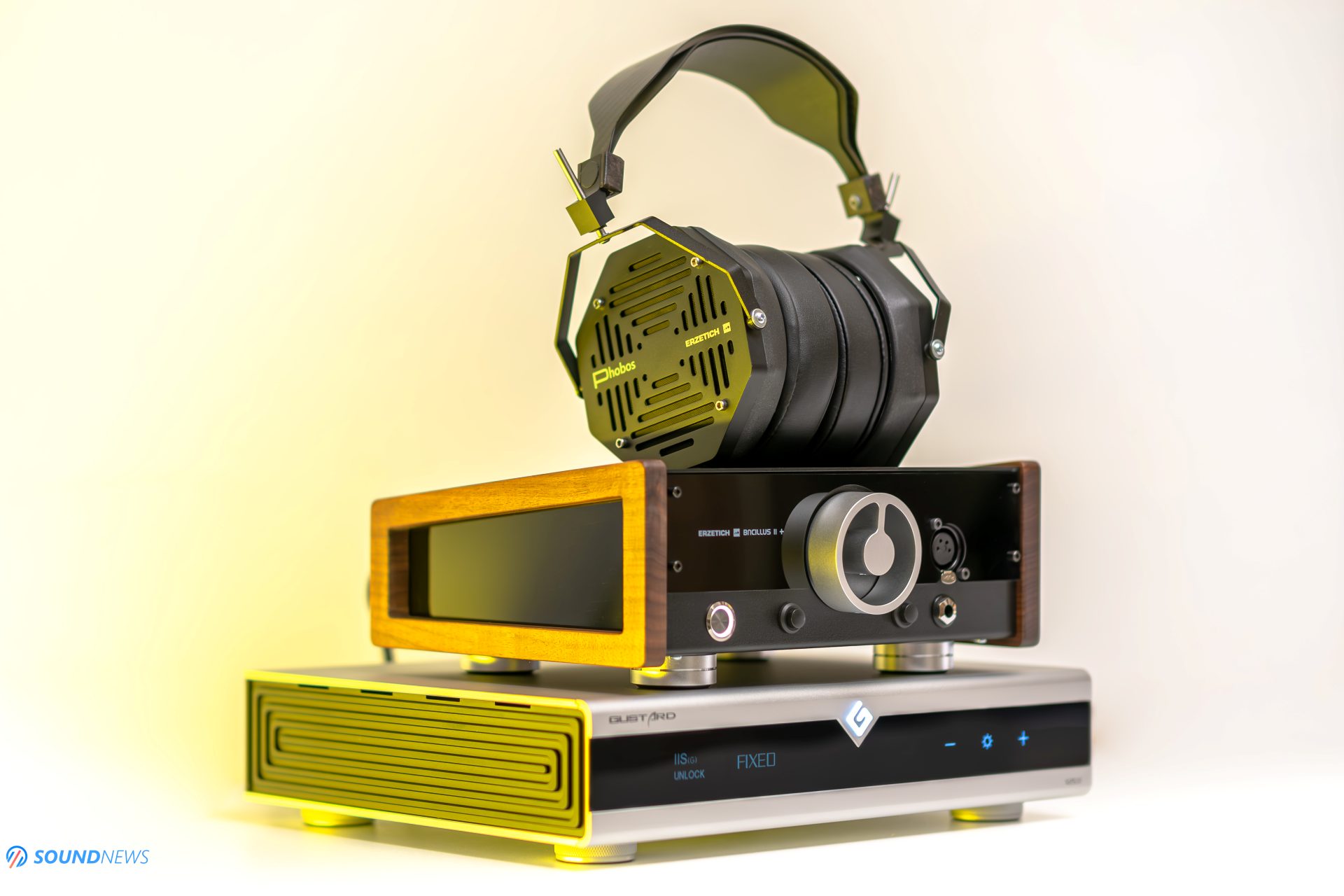
VI. PCM Digital Filters & NOS Mode
Most ESS Sabre DACs out there use the embedded digital filters that DO NOT make a difference sound-wise and I have plenty of examples. Every Topping, SMSL DAC, and many other digital-to-analog converters show minuscule differences in measurements when rolling off the upper treble, usually starting with 18 kHz. However, when conducting subjective listening tests, all of their PCM filters sounded absolutely the same. I couldn’t detect a single thing, a small change in timing, resolution, flow, or frequency response, and while I’m no audio engineer, I still have proper hearing, I’m still Golden Ear certified by Philips. The Gustard guys went one step ahead and armed the X26 III with an Analog Devices SHARC DSP and FPGA that enabled them to develop their digital filters, bypass the stock ones, inject their code, and use their in-house developed filters. And you know what? They finally make a (substantial) difference! Although I’m a “Vivid” type of listener and as a HiFi reviewer, I usually need to hear everything a DAC can offer in the stock form, I had some Aha! moments with the Composite and later with the Gentle filter enabled. The latter works outstanding with acoustic music and vocal performances. If the track is not racing to the finish line, then you should try the Gentle filter. It might forever change your preconceptions about ESS Sabre DACs and digital filters. I knew exactly what to expect as X30 does the same things and for about two days straight I listened to the X26 III via its Gentle filter, which in a way softens the contour of the notes, slows the pace a bit and reflects a sweeter side of music listening. You should definitely give it a try.
Gustard never explained how their NOS mode works, but I presume the stock oversampling filters are bypassed and the X26 III is forced to play in non-oversampling mode. If that is the case, then the PCM digital filters are also being bypassed. NOS mode offers a sound similar to Gentle PCM filter, but it’s even smoother and while the music loses a smidge of resolution, control, and definition, it becomes even lusher, as if I start spinning vinyl as opposed to using Roon with my Qobuz and Tidal subscription. In NOS mode, some of the old tunes of my youth sound the way I remember them back in the day, getting a somewhat vintage vibe. Can you believe all of this is coming from an ESS-Sabre-based DAC? Think about this for a while.
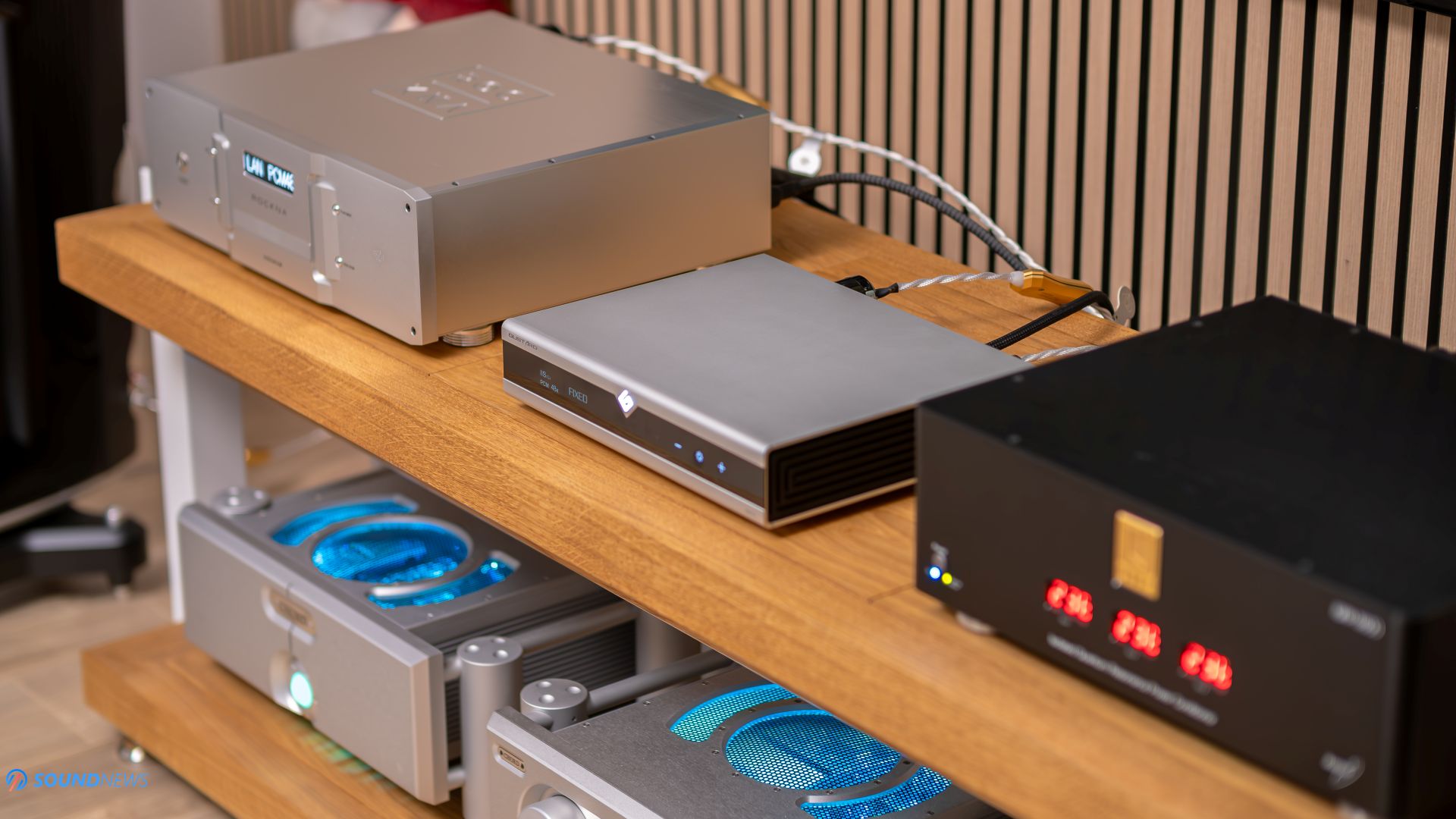
Frequency Response
VII. Bass
Someone called X26 PRO light sounding in the bass over social media and that made me giggle because this is one of its strongest skills: delivering a strong bass kick, having a strong foundation for long sustains (thanks to a beefy output stage), and later decaying all of that energy naturally. Not too soon and not too late, just right. The quality of the bass is another impressive trait of the X26 PRO together with the X26 III, but I feel with the slight rise of resolution on the newer model, the bass quality improved as well. Things like bass layering, breathing, sustain, decay, and whatnot become real on this unit and if you are into bass-heavy tracks, then I cannot recommend you enough the X26 III. I sometimes call a DAC ultra neutral or linear and that’s because the energy they offer doesn’t go up or down from linearity. Although the X26 III is a strict DAC when it comes to frequency response, covering it fully and not trying to go overboard or roll off a frequency region, it infuses more life into the bass. The oomph gets omnipresent, the fullness is slowly conquering your listening space and you slowly start realizing that only an immaculate bass performance can get you such impressive traits. If you need a slower bass presentation and a rounder one too, mimicking the sound of an R2R ladder DAC, then you can always enable the NOS mode or play a little with the PCM filters, the Gentle mode will slow down the pace, and show a calmer side of music listening. These chameleon-like effects make the X26 III more interesting compared to the usual delta-sigma DACs I’m testing around here and this needs to be reinforced once again.
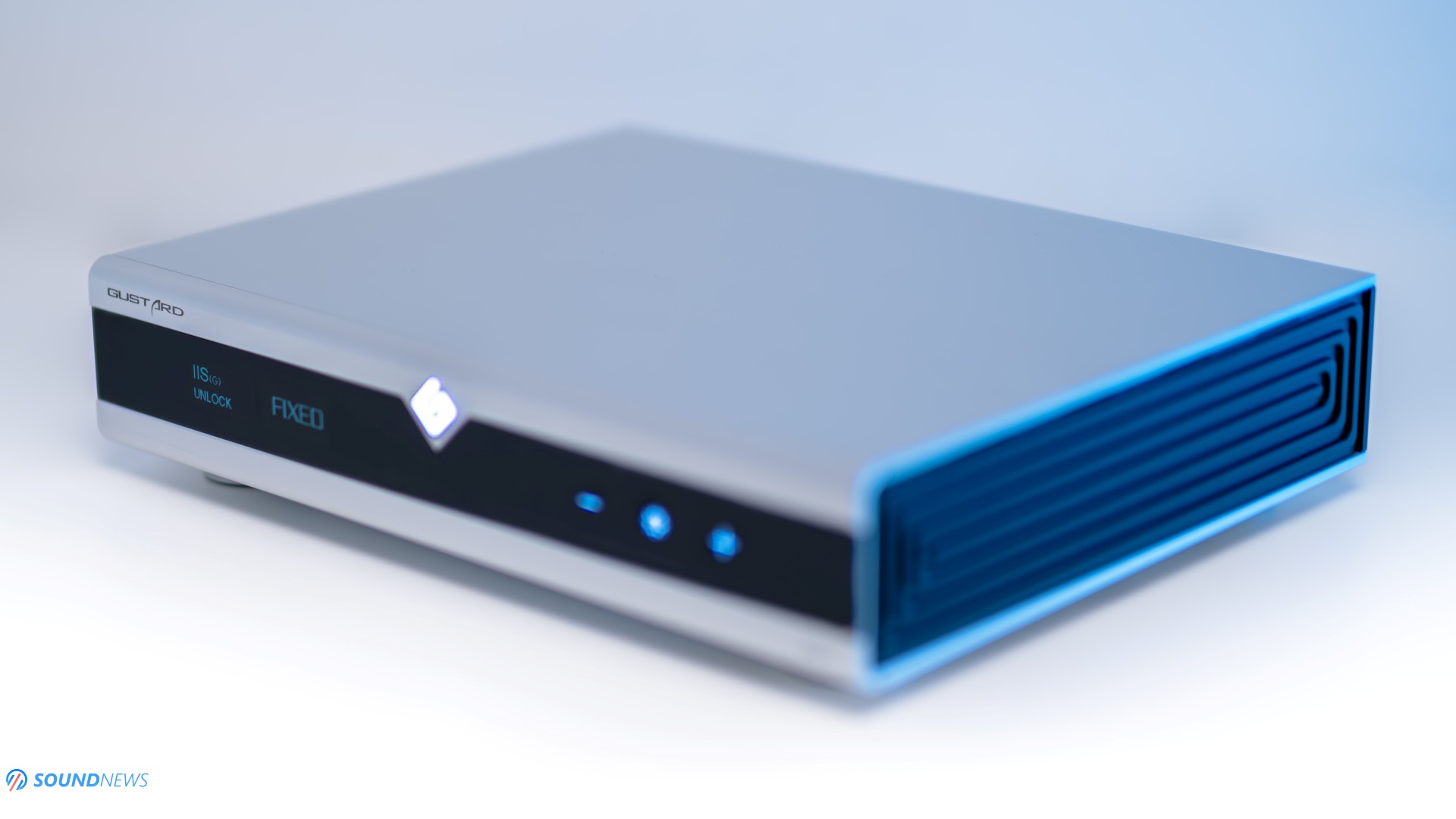
VIII. Midrange
If there’s a thought that the X26 III might sound lean or thin in its default settings, then I’m here to debunk that feeling, as the midrange feels just right on the X26 III, but again, you can boost the contrast and free the sound a bit that works in favor of the midrange, especially for all things acoustic. It’s a bit unusual getting these beautiful overtones, and sweet female vocals that remind you once again why we love this hobby so much. The refinement and the shimmer are there and that makes the X26 III together with Gustard’s X30 and Ferrum WANDLA – a different breed of ESS Sabre DACs that don’t follow the rules. I never followed them, it’s in my nature and I’m bonding well with such digital creatures, having a very expressive way of dealing with the frequency response. Getting a sweet-sounding R2R ladder DAC or 1-bit FPGA DAC is something everybody would expect, but getting a sweet-sounding chip-based delta-sigma DAC? Well, that’s a head-turner right there and the X26 III is part of this flock. It’s a black sheep among a sea of me-too converters and that’s what makes it interesting in my eyes. To my ears, to be more precise. If you already followed my X30 review, then everything I’ve said about it in the frequency region could be copied and pasted here and that would be normal. There’s just one thing I want to add: the sound gets weightier on the X26 III versus the X26 PRO, ultimately improving the quality of the midrange of the newest unit. Gustard redeemed themselves with the X30, and the story repeats with the X26 III. It’s unusual calling a chip-based unit involving, soothing and organic, but that’s what I’m hearing at the moment.
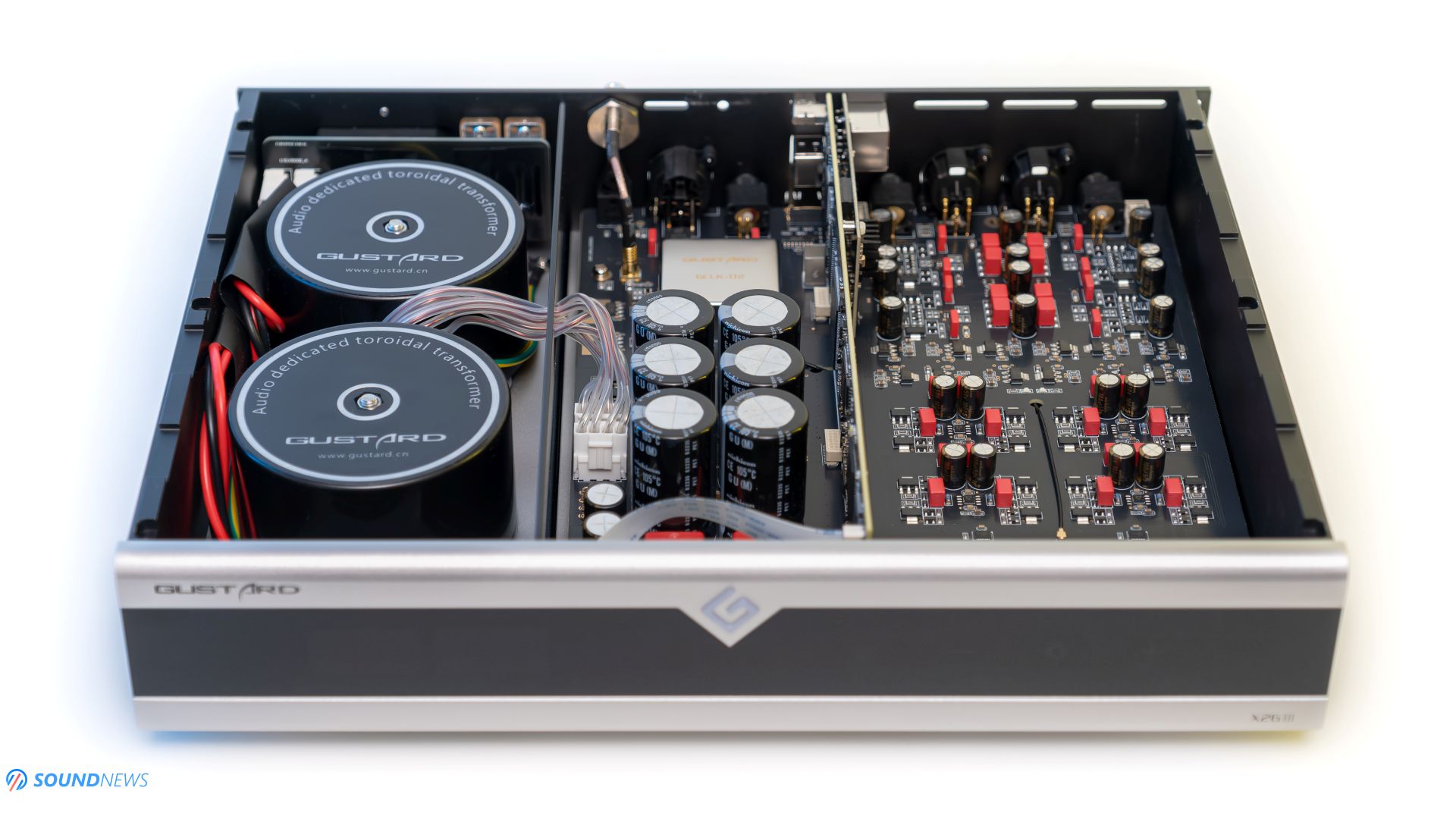
IX. Treble
The frequency region that needs no introduction on ESS Sabre converters is the treble. Yes, it’s extended way above the top octave, yes, it’s contoured, detailed, and textured. And no! It’s not clinical, overly sharp, or bright. This change of pace started with the X26 PRO and ever since, Gustard further polished the treble for a more natural presentation that removed glare and listening fatigue. On a personal scale from the Gustard portfolio, the R26 is the easiest going unit, only partially rolling off the upper treble, the X30 comes next that no longer rolls-off information, but provides all of the good qualities an excellent converter should have, X26 III and A26 are following closely, having the same extension and resolution, without the impressive tightness. The last one on the list is the X26 PRO that in the wrong conditions brings a slight dose of sharpness, exuding a bit of edginess with the wrong upstream equipment.
X26 III leans towards the X30 and that’s why I called it a miniature X30 a couple of times. All in all, the X26 III covers the frequency response in full, there are no gaps or rises, just a slight boost of energy in the bass, a sweeter tone in the midrange, and a more relaxed treble output that won’t slash your eardrums.
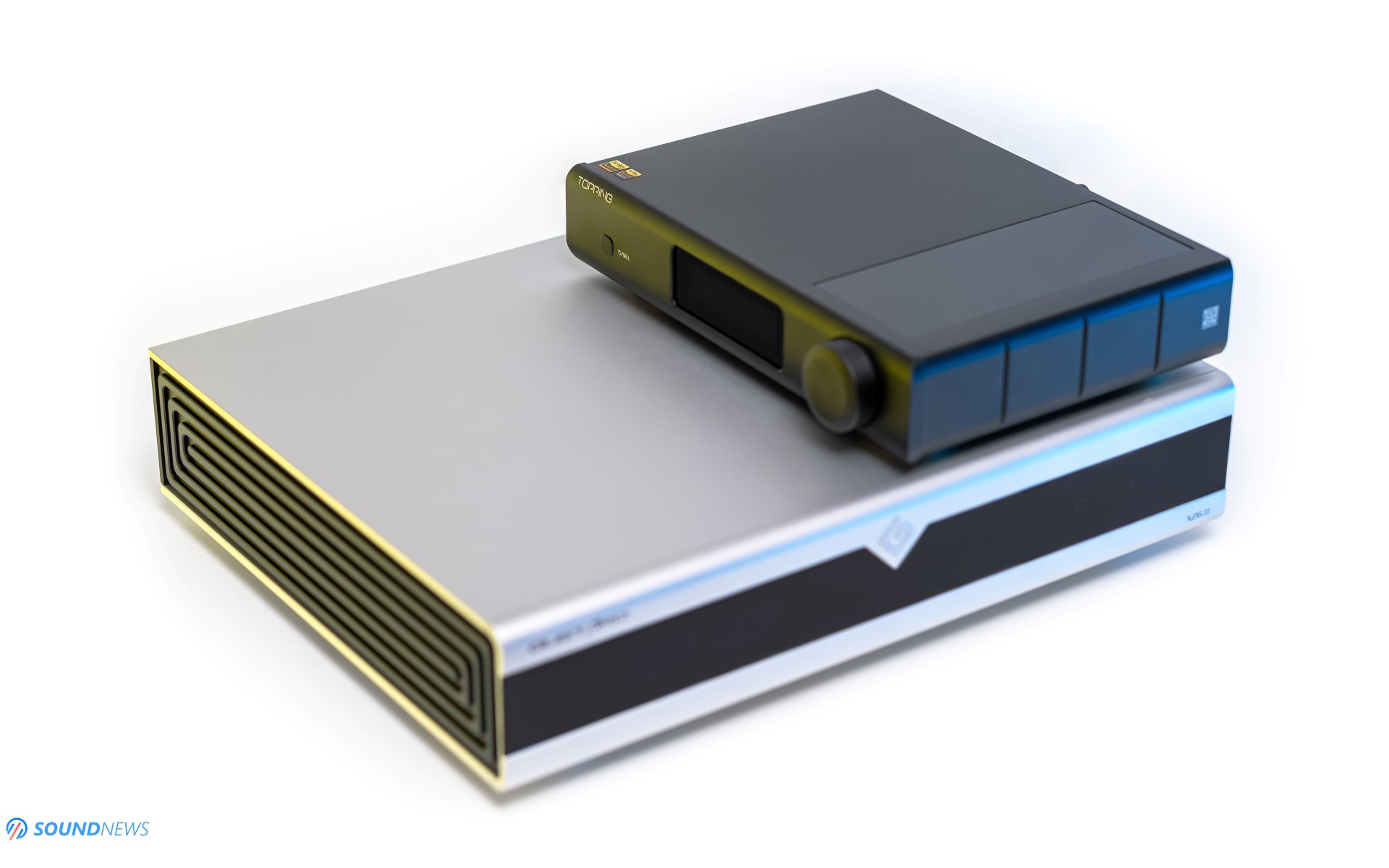
X. An Important Comparison
Gustard X26 III ($1.599) VS Topping D90 III Discrete ($999)
For most folks, the Topping D90 III Discrete could be the last converter you will ever need, since the technical performance is high, the fun factor comes in little doses and as a 1-bit DAC, it was blessed with an amazing flow, something that oversampling DACs could only dream about. Considering that you could get it at as low as $849 at the moment, it’s becoming an enticing proposition for folks who need a no-nonsense DAC at a price that makes sense. Its build quality is great, it doesn’t occupy lots of desktop space and its stealthy look won’t attract the cat eyes of our beloved, having a higher WAF than your average DAC.
The X26 III is by a good deal bigger and weightier, occupying more real estate, but at the same time having the internal space for bigger and higher quality components and proper power supply implementation. X26 III is more expensive, but at the same time offers a much wider feature set, rocking custom PCM digital filters, NOS and OS modes, plus a solid wired streamer that’s Roon enabled, and let’s not forget the beefy output stage, dual power supply implementation and the fully discrete output stage biased into Class-A operation. It’s a different beast altogether.
These two DACs are quite different, yet they both use discrete components throughout their circuits, although I must admit that the X26 III is populated with plenty more such sought-after components. D90 III Discrete has also a 5V mode via the XLR output, which I recommend engaging right off the bat, and you can also disable the digital volume attenuation, which is my second recommendation.
Sound-wise, there is a lot to love about both units and when discussing their resolving abilities, then I’m getting a very similar picture with both devices. I find them clean, and highly resolving, and searching for micro-details won’t be a long quest line for both. Small intricacies pop here, there, and everywhere, even without closing my eyes. This sensation of crispness and high resolution can significantly improve your listening experience if your upstream equipment is up to the task. If all you need is to hear all and everything behind your music, then you should probably save a few bucks and go with the D90 III Discrete, as in this regard – it’s up there with pricier converters.
The same goes for their need for speed senses and fast transients. They both go in and out in split seconds and if you’re into fast-paced music as I am, then again, you’ll find them racing for pole positions most of the time. Regardless if you’re into underground chill-out, rave, or modern dubstep, both units will render lightning-fast notes without losing a beat. I find them equally impressive and the transients never slow down if the music isn’t requiring it. But when it comes to the initial kick into the chest? Well, that’s quite a different story. Topping, as a brand, was always known for linearity and excellent measurements, but they didn’t always care about HiFi junkies or the emotional side of music listening and this is where the X26 III wins its first round. It’s unmistakenly harder pounding in the bass, sweeter and fuller sounding in the midrange, as if the soloist has stronger lungs and bass guitars have thicker copper strings…It’s hard to explain by mere words, but there’s more life in X26’s performance, trying to better convey the beauty within a musical instrument.
The D90 III Discrete isn’t dead flat or lifeless by comparison, it’s still the best Topping I’ve experienced so far, but it’s nowhere near the level of engagement the Gustard is putting on display. Unsurprisingly, dynamics are just going wilder on the X26 III, everything that has to do with the physical manifestation of the sound, is stronger on it. It physically moves additional air down low; it adds more flair to the midrange, it pounds your chest a little stronger, and overall, I would call it more fun sounding at the end of the day.
To my surprise, from a 2.5D-sounding Topping D90SE I tested two years ago, the D90 III Discrete together with their limited edition DX9, showed a much more interesting scale, expanding not only on the X and Y axle but also on the Z axle, adding depth and a sensation of air passing thought notes that wasn’t present on their former units. D90 III Discrete together with the DX9 could finally be described as 3D sounding…but not to the extent the X26 III brings forward so naturally. The imaging and sound staging capabilities of the Gustard sit on a higher level and that can be felt in both stereo and head-fi battle stations even with an untrained ear.
Ultimately, it’s not about winning or losing, it’s about finding a unit that suits your needs at a price that makes sense. Maybe a $500 DAC won’t perform the way I like it and won’t tick all of the boxes I need, but this very DAC could be a gold mine for someone just starting this beautiful hobby. While the D90 III Discrete loses a few boxing rounds, the fight doesn’t finish with a KO, but with the scoreboard. It’s still a great-sounding DAC, and I’m putting my reputation in these claims, it’s still plays at a higher league compared to the former D90 and D90SE and it could be the last DAC that you’ll ever need. However, if your pockets run deeper and your experience is slowly building up, then the X26 III will tick additional boxes and provide a more complete listening experience from top to bottom, but everything has a price. $1599 in this case.

My Conclusions
Sometimes a unit lands on my test bench and begins to showcase its music-making capabilities, features, and impressive engineering qualities and the affordable price is a bonus that makes it seem like my keyboard is writing words by itself. The Gustard team has trained another natural-born DAC killer amidst their ranks, a true headbanger and dopamine infuser that’s stoic and proud of its heritage. As a whole, the X26 III has little to no compromises and that’s the raw, unspoiled truth. Pit it against units costing 3 or even 5 times its price and we’ll be talking about nuances, tiny things that were better on one or another unit.
Sure, it’s still not X30-beating material, but it wasn’t supposed to dethrone its bigger brother, only its older one, which it did gracefully. And yes, the X26 III isn’t only a marginal facelift that makes it symmetrical looking, exuding a higher refinement versus the raw-er looking X26 PRO, but a re-imagination of the X26 line, by gently altering its tonality, simplifying the signal path, improving the most crucial components (DAC chips & clocking system), while further expanding its feature set by adding a wired streamer that supports a ton of protocols and its Roon enabled too.
X26 III isn’t reinventing the wheel, it’s still the same good old X26 PRO having much-needed improvements across the boards, without asking for an astronomical price. Last week, we gave our first Highly Impressive award to the Ø Audio FRIGG 02 loudspeakers and while I won’t give these awards so lightly in the future, the Gustard X26 III deserves all of the praise, getting our second Highly Impressive award. This is how a great-sounding product should be improved and I hope its close competitors are taking notes.

If I were to nitpick a little, then of course that would be about its plasticky remote control that you can find starting with their $499 X16 and finishing with their TOTL $2.999 X30 converter. Last but not least, a proper website for the Western market is still needed, where we can get all of the marketing materials, drivers, and firmware updates. A Google-translated page isn’t practical or serious, and some might even skip this product entirely due to a poorly designed web page that offers little to no online support.
The Gustard X26 III can be purchased from Apos Audio’s web store right here for $1599. That includes worldwide shipping, an extra year of warranty, and proper support if things are going sideways. If you have some appreciation for the work involved around here and want to support our cause, then get it from Apos Audio. In return, we’ll get a small commission and a big thank you! If you take the plunge and have some burning questions, feel free to drop a line in the comments section below. That’s all for now, Sandu’s signing out!
PROS:
- Oozes coolness and style, looking like a miniature X30
- Its symmetrical display and touch controls made it so much better
- Flawless looking on the inside and out
- The clocking system and the DAC chips have been improved, and the component selection is still great
- The feature set is now better than ever, rocking a wired streamer and Roon support
- Custom-developed PCM filters and NOS/OS modes that make a major difference
- Dead silent in both a stereo and head-fi battle station
- The highest resolving DAC you could buy right now under ~$2K
- Highly dynamic and engaging-sounding
- Punchy and tightly controlled in every situation, although not at the same level as X30
- Note separation, layering, and depth are great for a delta-sigma oversampling DAC
- Covers the frequency response in full, balancing it out in a natural fashion
- An impressive selection of digital inputs and analog outputs
- A very good value!
CONS:
- Plasticky remote control
- A digital volume control lowers the DAC’s resolution when lowering the volume (X30 is much better in this regard), and that’s why I wouldn’t use it as a DAC and Preamp combo.
- A Google-translated page is not a proper web page
- You won’t find a user manual in the package
ASSOCIATED EQUIPMENT:
- HiFi Racks: WoodYard Suspended Triple & Baby Modular
- Digital Transport / Roon Server/ Streamer: Rockna Wavedream NET 4 TB
- Network Switch: Ansuz PowerSwitch D3, Matrix Audio SS-1 PRO
- DACs: Rockna Wavedream Signature XLR, Gustard X26 III, Gustard X30, Topping D90 III Discrete
- Preamplifiers: Chord Electronics Ultima PRE2
- Power Amplifiers: Chord Electronics Ultima 3 (X2)
- Headphone Amplifiers: Cayin Soul 170HA, Erzetich Bacillus II+
- Loudspeakers: Raidho TD 2.2
- Headphones: HiFiMan Susvara & Susvara Unveiled, T+A Solitaire P, Erzetich Charybdis & many others
- Interconnects: Crystal Cable Art Series Monet XLR (X2)
- Speaker cables: Crystal Cable Art Series Monet
- Power Cables: Crystal Cable Art Series Monet (X4), Roboli Stars (X2)
- Ethernet Cable: Crystal Cable Art Series Monet
- HDMI Cable (I2S): AudioQuest Dragon
- Balanced Isolation Power Conditioner: KECES IQRP-3600







